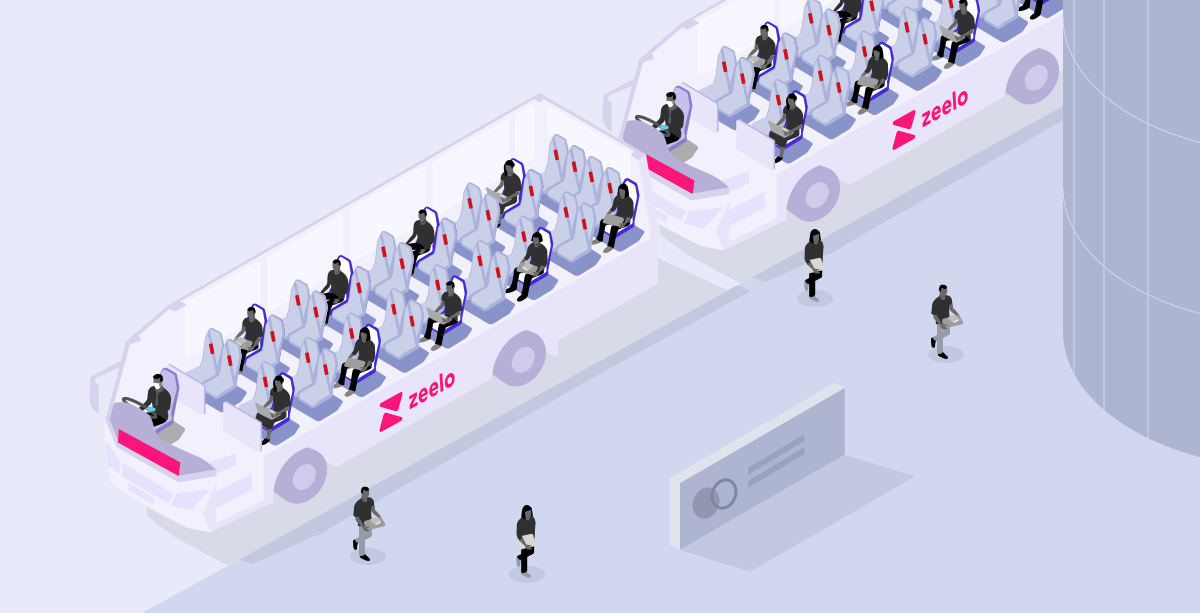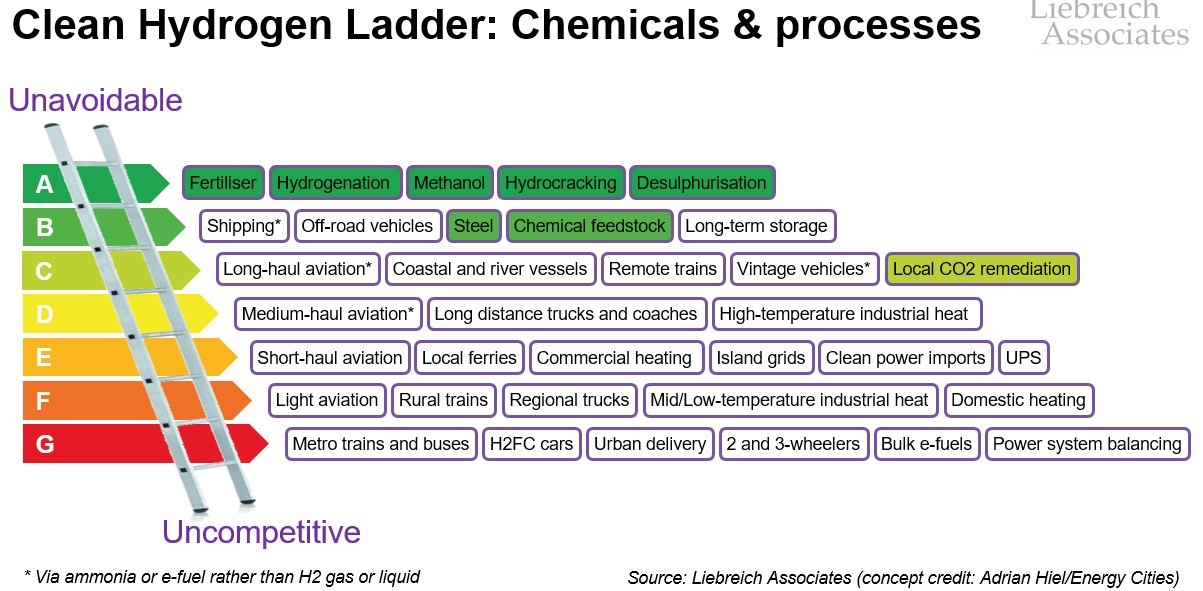Zeelo: Public Transport’s Covid-19 Capacity Crunch & What To Do About It
The shock of Covid-19 lockdowns hit the world’s urban transportation systems like a heart attack. As discussions now turn to how we reopen the economy, we should not expect a quick recovery. Indeed, there is every chance that mass transit is looking at the equivalent of debilitating chronic heart disease, with lower demand, but even lower capacity. Quick action is needed.
The Lockdown Period
When the pandemic first hit, the urgent priority for transit agencies and operators was to balance the dramatic decline in passenger numbers with the need to keep public transport open for critical workers – while at the same time dealing with increasing levels of staff sickness and self-isolation.
As the lockdown wore on, attention began shifting to the safety of mass transit passengers, drivers and other transport workers. Some countries and cities quickly provided PPE for transport staff and mandated face-covering among passengers, while others continued to see large numbers of cases and deaths among staff – at least 100 in the US and 34 in London by 20 April – and presumably among passengers.
We began to see some Mayors and municipalities moving to make more street space available for active journeys and for exercise. Milan is introducing temporary cycle lanes, widened pavements, cyclist priority streets and reduced speeds limits; Berlin has created ‘pop-up bike lanes with physical distancing; Bogota is doing similar. Progress, however, has been patchy, with the usual voices stridently defending the primacy of their parked cars.
One other immediate impact of Covid-19 was to drive a coach and horses through our underground, train and bus services’ finances. Mass transit is a low-margin business at the best of times, and the loss of fare income, along with increased cleaning costs, almost immediately led to an urgent need for exceptional financial support.
The Next Phase – Living with Covid-19
During the coming months, as lockdowns are eased, we will be entering a different phase. How long it will last, we simply don’t know, but it would be wise to assume at least a year, probably two, maybe more. This virus is not going to miraculously disappear; it is here until we have a safe vaccine or until we stamp it out the old-fashioned way with social distancing, testing, tracing and quarantine.
The first point for transport providers is that demand is going to remain low. Discretionary travel will be discouraged; home-working will remain ubiquitous, business travel will be almost non-existent. Consumption is not going to come roaring back, it is going to limp along under the combined weight of social distancing and the destruction of balance sheets – individual, corporate, charity and public sector.
Lower overall demand looks like it will be exacerbated by a dramatic mode shift away from mass transit. Those who are out and about are going to be scared of using public transportation. Data on China from an Ipsos report shows that as the lockdown was eased, private car use surged to a 66% mode share, from 34% pre-COVID, with public transport use seeing an almost identical decrease in usage. According to Auto Trader, nearly half of UK public transport users said they would be less likely to use it once lockdown restrictions have been lifted.
Lower demand and mode shift away from public transport, however, may not even be the biggest problems facing transit operators: they are going to have a massive capacity problem, particularly at rush hour. Even a cursory look at the average bus or train carriage shows that if you want to maintain strict social distancing of 2m between passengers while on board, you have to run at 15% to 20% of peak capacity – with no one standing and only every fourth seat in use. A recent confidential briefing by the London Strategic Coordination Group went further, estimating that rigorous social distancing would reduce the Tube’s capacity to 15% of normal levels, and buses to 12%.
As the lockdown eases, despite lower transport demand, cities around the world could be facing congestion, gridlock, pollution, emissions and soaring demand for parking. The ability of the global economy to bounce back from the Covid-19 lockdown could be severely compromised by a lack of transit capacity.
What Needs To Be Done?
There are three things that could help avoid this dystopia:
First, mayors, municipalities and transportation agencies must act immediately to rebuild trust in mass transit, so that people feel safe using it even before the virus has completely disappeared. Step up cleaning regimes in a very effective and visible way – spraying stations with anti-viral solutions in full view of the press and public; issue staff with PPE; mandate the wearing of face coverings by passengers; increase capacity; and ruthlessly restrict passenger numbers so that they don’t overwhelm supply.
Second, they must promote active travel and micro-mobility, not as a nice-to-have for sustainability or health reasons, but as a public priority in order to keep cities moving and to enable robust economic activity. Reward people for walking and cycling; remove barriers to scooter services; massively increase rental bike capacity; create temporary bike and walking routes; and set up bike and scooter parking and charging locations. At the same time, cap the numbers of taxis and private hire vehicles – which will otherwise soar – and do everything possible to discourage the use of private cars while road space is likely to be under extraordinary pressure.
Third, they need to find creative ways to increase capacity, especially during rush hours. Obviously, this means increasing the volume and frequency of their own services, particularly on the shoulders just before and after rush hour. But in many cases the capacity to do so is limited – in London, for instance the Victoria Line was already running a train every 100 seconds during rush hour before Covid-19. In addition, therefore, they need to call on private sector transport providers, many of whom are going to remain idled by the effects of Covid-19 on the travel and hospitality industry for some time.
A number of the big names in smart mobility – Uber, Via, Moia – already have the ability to run dynamic bus and minibus services, which could quickly reduce the pressure on public transport. But they are not the only game in town.
Before the pandemic, Zeelo was a young start-up providing commuter coach services for the staff of major employees. When the UK and South Africa entered lockdown, 80% of Zeelo’s existing services were suspended; the company quickly pivoted to providing safe transportation for critical workers. Using its booking platform, it can place small numbers of passengers in large vehicles, in order to enable social distancing; all its drivers use PPE; and the vehicle is sanitised before and after each trip. Proprietary route design software and a network of local coach company partners enable routes to be optimised on a daily basis. So far, Zeelo has signed up companies such as Amazon, Ocado, Avara Foods, Argos and Colgate, and expects to initiate services for many other organisations in the next few weeks.
With its focus on larger vehicles and its network of vetted coach company partners, Zeelo is ideally suited to help transit authorities quickly expand rush hour capacity in the post-lock-down phase of the pandemic. But it is not the only smart mobility provider that could help. A number of the big names – Uber, Via, Moia – already have the ability to add dynamic bus and minibus services very quickly, reducing the pressure on public transport.
Even driverless shuttle providers like Navya and EasyMile could provide safe services on campuses or geofenced areas like business parks and shopping centres.
Not only would these smart mobility services add capacity but, because they are fully digitised, they are ideally placed – subject to privacy controls – to supporting public authorities as they move into the “test and trace” phase of their pandemic response.
The New Normal
In the longer term, when the Covid-19 pandemic eventually passes, life will return to normal. Not the old normal, but nevertheless one in which the public can again go about its life without fear of catching a deadly disease. But the integration of these smart mobility solutions will remain.
Transport demand is going to be depressed for quite a while, probably even after the eventual economic recovery. Some of the behaviour changes driven by the lockdown are likely to be sticky. Video conferencing technology is improving in leaps and bounds; people are getting used to Zooming, Teaming, GoToMeeting and Skyping. Those enjoying home working will want to continue at least a few days a week. Bosses will have learned who can be trusted and who cannot – the iron grip of presenteeism will have been broken. Remote medicine for primary care will be the norm: no more trips to the GP for repeat prescriptions, far fewer hospital visits. While most parents will be only too glad to see the back of home education, for older kids and students it will find a permanent place in the curriculum.
Nevertheless, the likelihood is that within a few years of the final Covid-19 case, transport demand will have bounced back to the levels of 2019 and beyond. Transit authority budgets will remain under far too much pressure to respond by adding capacity in the traditional way, building infrastructure and adding services. Weak public finances and an extended period of lower fare income will put paid to that. We are likely to see a decade or more of rationalised operations and shelved investment plans.
So Mass transit’s peak-time capacity problem is here to stay. Until Covid-19, the blurring of the boundary between public and private transportation, the integration of smart mobility services into daily commutes, was the stuff of specialist transport and planning blogs. Real-life shifts in commuting patterns were proceeding only slowly. All that is about to change.
When historians look back on the current era, the end of the post-war public transport paradigm will not be seen as the arrival of Uber, but the 2020 Covid-19 pandemic.
Michael Liebreich is the Chairman of Liebreich Associates, Founder and Senior Contributor of Bloomberg NEF, ex-TFL Board Member and Chairman of Zeelo; Sam Ryan is a serial transportation entrepreneur, Co-Founder & CEO at Zeelo. He can be reached on sam@zeelo.co.
Terms of use: photos and other media may be used exclusively for the purpose of publicising an upcoming or past event involving Michael Liebreich, or to illustrate an article written by him. Their use must be accompanied by a clear indication of copyright in the following form:
© Liebreich Associates/name of photographer. Photos or other media downloaded in this way remain the property of Liebreich Associates Ltd. Any infringement of these terms of use may result in legal action by Liebreich Associates Ltd or by the respective photographer or rights holder.






